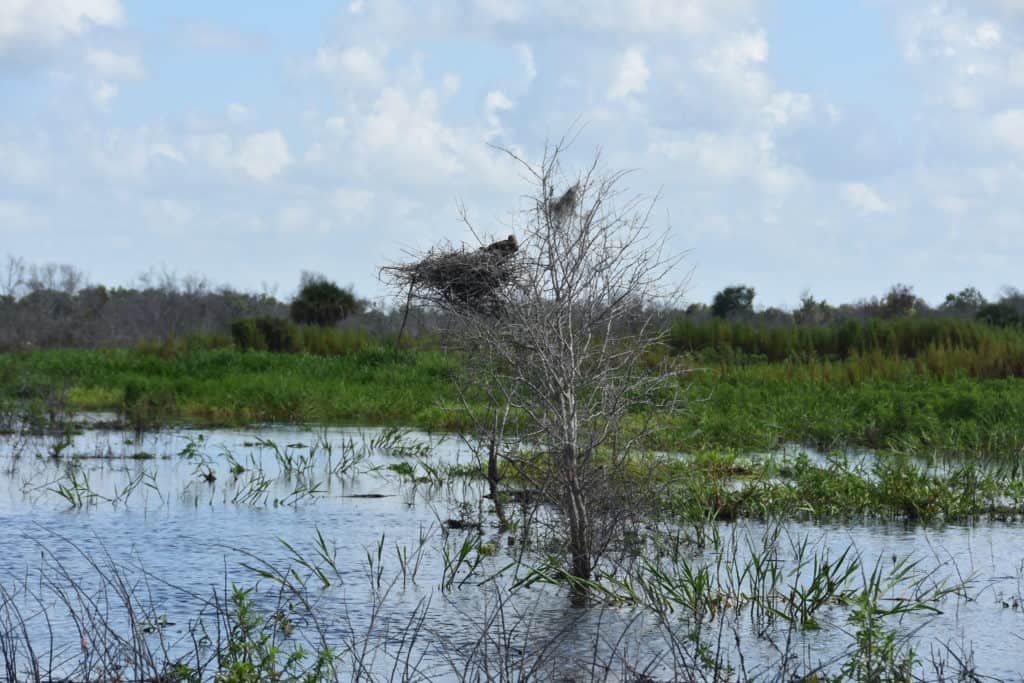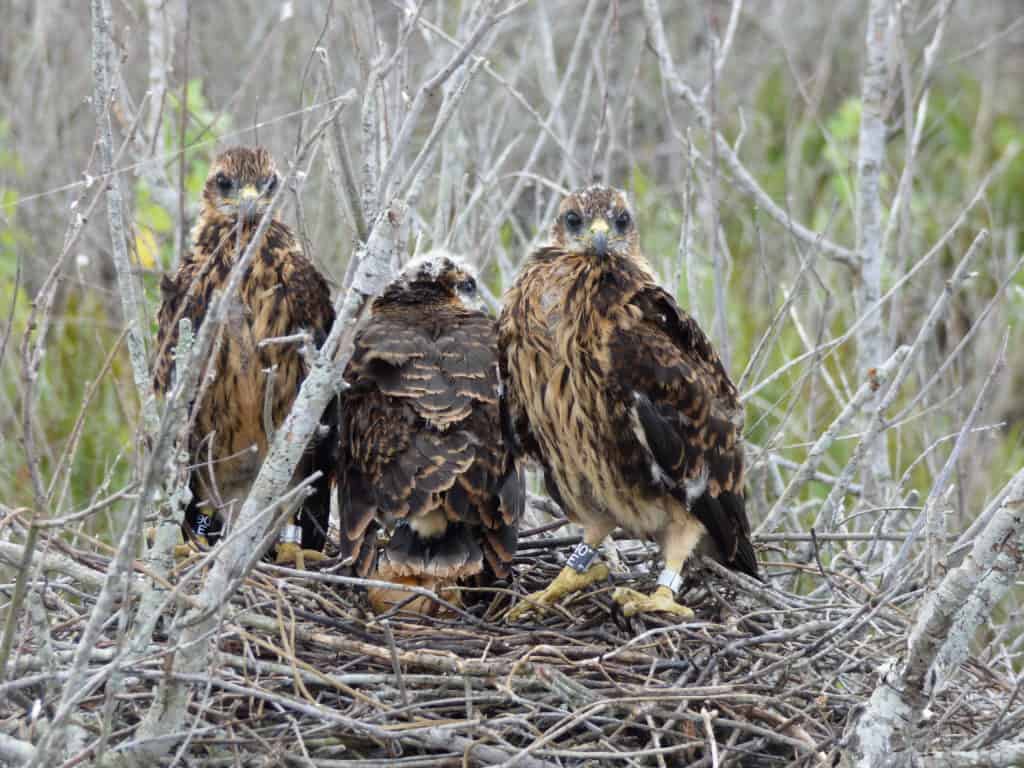Share this article
Endangered snail kites sensitive to Florida water levels
Endangered snail kites depend on a good balance of water levels in the aquatic ecosystem of southern Florida.
Too much water or extremely dry conditions might give different predators easy access to the birds’ nests and even lead to nest collapse.
“In general, we found very strong effects of water levels on nest survival,” said Robert Fletcher, a professor in wildlife ecology and conservation at the University of Florida and the lead author of a study published recently in Biological Conservation.
The Everglades snail kite (Rostrhamus sociabilis plumbeus) population has been a mainstay on the federal Endangered Species Act since the list’s inception. The bird has been heavily affected by the changing water levels of central and southern Florida wetlands due to water management regimes. As their name suggests, these birds subsist exclusively on apple snails. While they previously fed on the only species of these snails (Pomacea paludosa) native to southern Florida, they now also eat invasive island apple snails (Pomacea maculata).

Nests surrounded by too much water, or with not enough, can lead to collapse and gives predators access to chicks or eggs. Credit: Adam Price
Researchers have long studied what impacts the kites’ nest survival, which is a good indicator of overall population health. Since 1996, researchers have been visiting as many snail kite nests as they can find in Florida wetlands to determine nest success. Since then, Fletcher said that the number of nests has greatly varied depending on the year. The lowest years have seen only 20 nests, while successful years can see anywhere from 400 to 850.
For this analysis, Fletcher, who took over the project about nine years ago, and his colleagues analyzed the success of about 2,800 nests from 1996 to 2016. They counted chicks and assessed the water level and changing environmental conditions over the nesting periods.
They found that nesting success was heavily dependent on water levels. Overall nest survival was about 30% on average, Fletcher said. But low water levels impacted this number. When conditions were too dry in swampy areas, nest success could fall as low as 3% to 5%, they found. Fletcher said it’s unclear exactly why, but it could be that drier conditions allow better access to land predators such as raccoons (Procyon lotor) and some species of snakes.
Since snail kites sometimes build their nests on bulrushes or cattails, dry conditions can also result in nest collapse as the vegetation dries out.
But the team was surprised to find that high water levels also led to low nest survival. Fletcher speculated that nest collapse also occurred in these areas. When nests are too close to the water, aquatic nest predators like marsh rice rats (Oryzomys palustris) or possibly even American alligators (Alligator mississippiensis) may be able to reach nests more easily.

Three snail kite nestlings. Credit: Adam Price
Extremely dry or wet conditions might also impact snail kites’ abilities to find food. A lack of sufficient food supplies could lead them to abandon their nests.
Fletcher said that follow-up research using trail cameras on snail kite nests would help answer some of these questions about why they fail, and what their major predators might be.
The researchers also found that nest success was also related to the ecology of the area where the birds were nesting. Snail kites that nested by lakes rather than in swampy wetlands tended to be less impacted by water levels when it came to nest success, Fletcher said.
Some previous research had found different results regarding the relationship between nest success and water levels. This had led to a dispute between researchers on the best type of conditions to improve nest conditions for snail kites, with some believing that varying water levels didn’t impact success very much.
But Fletcher said studies with those findings typically generalized conditions over a long time period, characterizing wet and dry years. For this study, in contrast, the researchers checked the conditions present at the nest and how they changed over the course of a nesting attempt.
Land managers in Florida actively manage the Everglades and other wetlands to improve conditions for vulnerable species like snail kites, using a template for how to set water levels. Fletcher said that a better idea of exactly the kinds of water conditions the birds thrive in can help these managers improve conditions for the endangered birds.
“We hope that this information can further update those decisions in terms of how we shoot for water management in those wetlands,” Fletcher said.
Header Image: Snail kite nests do best above water, but not too much water. Credit: Adam Price








